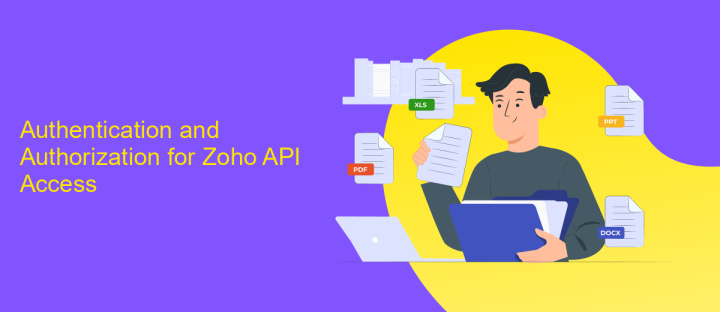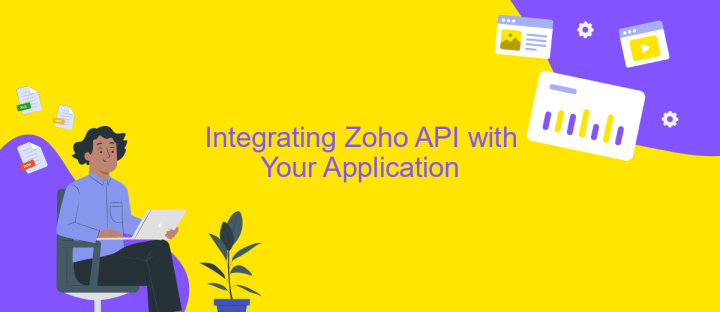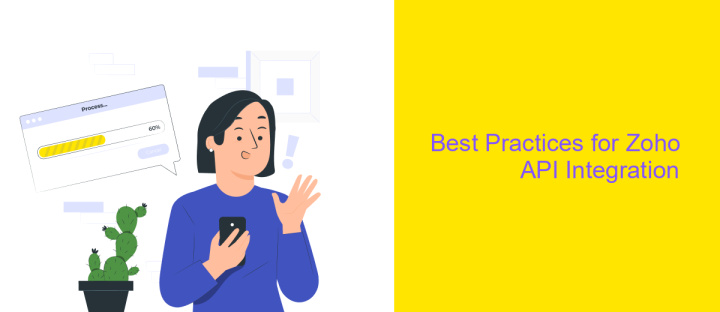Zoho API Integration
Zoho API Integration offers businesses a powerful tool to streamline operations and enhance productivity by seamlessly connecting various Zoho applications with external systems. By leveraging Zoho's robust API capabilities, organizations can automate workflows, synchronize data, and customize solutions to meet their unique needs. This integration not only saves time and reduces manual errors but also empowers businesses to harness the full potential of their digital ecosystem.
Understanding Zoho API and its Capabilities
Zoho API is a powerful tool that enables seamless integration with Zoho's suite of applications, allowing businesses to automate workflows and enhance productivity. By leveraging Zoho API, developers can access and manipulate data across various Zoho services, facilitating customized solutions tailored to specific business needs. This API provides a secure and efficient way to connect different systems, ensuring data consistency and operational efficiency.
- Access comprehensive data from Zoho applications.
- Automate repetitive tasks and streamline processes.
- Integrate third-party applications with Zoho services.
- Customize workflows to meet unique business requirements.
- Enhance collaboration and data sharing across platforms.
Understanding the capabilities of Zoho API is crucial for businesses seeking to optimize their operations through integration. It offers a flexible framework that supports a wide range of functionalities, from basic data retrieval to complex automation. By utilizing Zoho API, organizations can unlock new potential, driving innovation and efficiency in their daily operations. Whether you're a developer or a business user, mastering Zoho API can significantly contribute to achieving strategic objectives and maintaining a competitive edge.
Authentication and Authorization for Zoho API Access

To access the Zoho API, it's essential to understand the authentication and authorization process, which ensures secure communication between your application and Zoho's services. Zoho employs OAuth 2.0, a widely adopted authorization framework, to manage access tokens. First, you'll need to register your application in the Zoho Developer Console to obtain the Client ID and Client Secret. These credentials allow your application to request an authorization code from the user, which is then exchanged for an access token. This token grants limited access to the user's data, ensuring security and privacy.
For seamless integration, consider using services like ApiX-Drive, which simplifies API connections without extensive coding. ApiX-Drive provides a user-friendly interface to configure and automate data transfers between Zoho and other applications. By leveraging such tools, you can streamline the authentication process and focus on enhancing your application's functionality. Always ensure that your access tokens are securely stored and refreshed periodically to maintain uninterrupted access to Zoho's API services.
Integrating Zoho API with Your Application

Integrating Zoho API with your application can significantly enhance its functionality by allowing seamless data exchange and process automation. To start, you need to understand the specific API endpoints provided by Zoho and how they align with your application's requirements. Proper authentication and authorization are crucial to ensure secure interactions between your application and Zoho services.
- Register your application with Zoho to obtain API credentials, including the client ID and secret.
- Set up OAuth 2.0 authentication to securely connect your application with Zoho services.
- Use Zoho's API documentation to identify the endpoints and methods that suit your integration needs.
- Implement the API calls in your application code, handling both requests and responses appropriately.
- Test the integration thoroughly to ensure data is transferred accurately and securely.
Once integrated, your application can leverage Zoho's powerful suite of tools to automate tasks, synchronize data, and improve overall efficiency. Regularly update your integration to accommodate any changes in Zoho's API and maintain optimal performance. This integration not only enhances your application's capabilities but also provides a more streamlined experience for your users.
Best Practices for Zoho API Integration

When integrating with Zoho API, it's crucial to ensure a seamless and efficient process. Start by thoroughly understanding the API documentation provided by Zoho, which offers valuable insights into its capabilities and limitations. This foundational knowledge will guide you in designing a robust integration strategy.
Next, focus on security. Implement OAuth 2.0 for authentication to safeguard sensitive data and maintain compliance with industry standards. Regularly update your API keys and monitor for any unauthorized access attempts. Security should be a top priority to protect both your data and that of your users.
- Utilize version control to manage changes and updates effectively.
- Test the integration in a sandbox environment before deploying it live.
- Implement error handling to manage exceptions gracefully.
- Optimize API calls to reduce latency and improve performance.
- Document your integration process for future reference and maintenance.
Finally, maintain open communication with Zoho support. Their expertise can be invaluable in troubleshooting issues and optimizing your integration. Regularly review and update your integration to align with Zoho's latest API updates and features, ensuring continued functionality and performance.
Troubleshooting and Common Errors
FAQ
What is Zoho API Integration?
How can I start integrating Zoho APIs with my application?
What are the common use cases for Zoho API Integration?
How do I handle authentication for Zoho API Integration?
Can I automate Zoho API Integration without extensive coding knowledge?
Time is the most valuable resource for business today. Almost half of it is wasted on routine tasks. Your employees are constantly forced to perform monotonous tasks that are difficult to classify as important and specialized. You can leave everything as it is by hiring additional employees, or you can automate most of the business processes using the ApiX-Drive online connector to get rid of unnecessary time and money expenses once and for all. The choice is yours!

